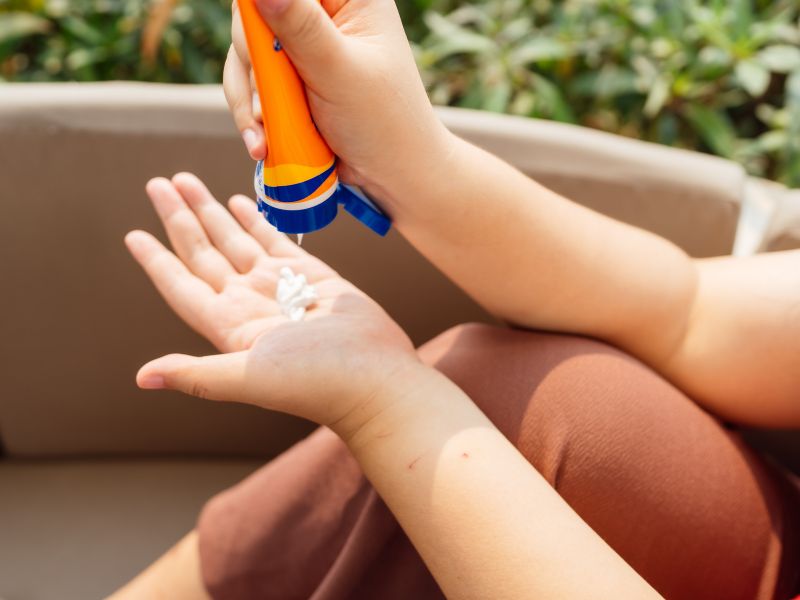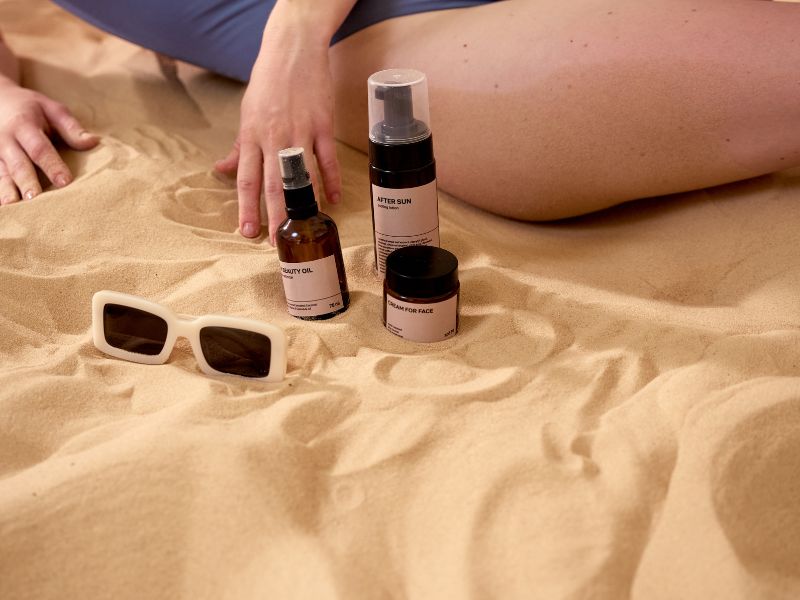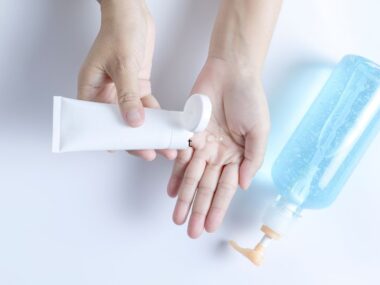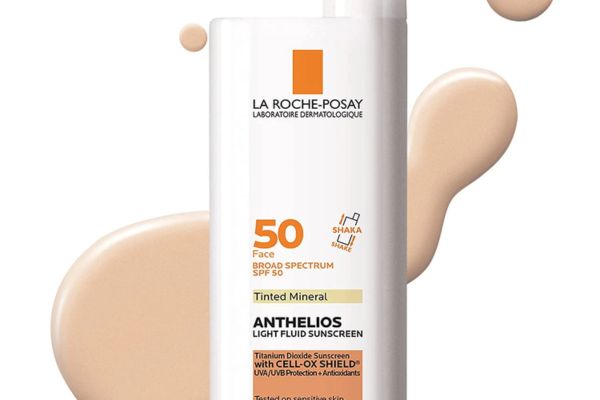Getting a new tattoo can be an exciting, deeply personal experience, whether it’s a small symbol, an intricate piece of artwork, or a significant cultural design. But once the tattoo is done, proper aftercare becomes crucial, especially if you want your tattoo to retain its vibrancy and clarity over time. One of the most commonly asked questions among new tattoo recipients is, “When can I apply sunscreen to a new tattoo?”
In this comprehensive article, we’ll explore why protecting a new tattoo from the sun is essential, when it’s safe to apply sunscreen, the types of sunscreen best suited for tattooed skin, and general tattoo aftercare tips to keep your tattoo looking fresh and vivid for years to come.
Understanding the Importance of Sun Protection for New Tattoos
When you get a tattoo, your skin undergoes trauma as the needle punctures it repeatedly to deposit ink. A new tattoo is essentially an open wound, requiring time to heal and a careful aftercare routine to avoid complications. During the healing process, your tattoo is especially vulnerable to external factors like sunlight, which can have significant, lasting impacts.
Why Sun Exposure is Harmful to New Tattoos Direct sunlight on a fresh tattoo can cause several issues:
- Sunburn: A fresh tattoo is sensitive, and sun exposure can easily cause it to burn, leading to redness, irritation, and inflammation.
- Fading and Blurring: Ultraviolet (UV) rays break down the pigments in tattoo ink over time, causing it to fade. For new tattoos, sun exposure can lead to premature fading and may even affect the definition of the lines.
- Risk of Infection: If a tattoo becomes sunburned, the skin can blister and peel, creating an opening for bacteria to enter and potentially causing an infection.
When is It Safe to Apply Sunscreen to a New Tattoo?
To avoid adverse effects, understanding when to apply sunscreen is vital. Most tattoo artists and dermatologists agree that sunscreen should not be applied to a fresh tattoo immediately after the procedure. Here’s why.
Initial Healing Period (First Two Weeks)
During the first 1-2 weeks, the tattoo is at its most vulnerable stage. The skin has been punctured thousands of times and needs time to close up and heal. Applying sunscreen during this phase is strongly discouraged for the following reasons:
- Chemical Irritation: Sunscreens contain chemicals and preservatives that could irritate the sensitive, open skin of a new tattoo, potentially leading to allergic reactions or inflammation.
- Increased Risk of Infection: Sunscreens can trap bacteria and debris on the skin’s surface, which might increase the chance of infection on the raw, healing tattoo.
During the initial healing period, the focus should be on keeping the tattoo clean and moisturized. Experts recommend keeping it out of direct sunlight entirely, which means covering it with loose clothing when going outdoors. After this initial healing phase, the tattoo should start to close up, although it’s not fully healed yet.
The Complete Healing Phase (3-4 Weeks and Beyond)
After about 3-4 weeks, most tattoos have gone through the initial healing process. The outer layers of the skin have closed, and any initial scabs should have fallen off naturally, indicating that the skin is no longer raw. However, even though the surface may look healed, the tattoo can still be healing beneath the surface. At this point, you can consider starting to use sunscreen on the tattoo, but only if there are no open areas, scabs, or signs of irritation left on the skin.
Waiting until the tattooed skin is fully healed, usually around the 4-6 week mark, is often the safest choice. By this time, most tattoos are ready to be exposed to a reasonable amount of sunlight with proper sun protection. However, if any part of the tattooed area remains sore, red, or irritated, you should continue to keep it covered until it’s fully healed.
Choosing the Right Sunscreen for Tattooed Skin
Once your tattoo is fully healed, applying sunscreen becomes an important step in maintaining its appearance. Not all sunscreens are suitable for tattooed skin, so let’s look at some factors to consider.
SPF Level
Dermatologists recommend using a high-SPF sunscreen on tattoos, ideally SPF 30 or above. This level provides adequate protection from both UVA and UVB rays, which are responsible for skin damage and fading of tattoos. SPF 50 sunscreens are particularly popular for tattooed areas because they offer enhanced protection, especially if you spend a lot of time outdoors.
Broad-Spectrum Protection
Always choose a broad-spectrum sunscreen, which protects against both UVA and UVB rays. UVA rays penetrate the skin more deeply and can break down tattoo pigments, while UVB rays primarily cause sunburn. Broad-spectrum sunscreens provide comprehensive protection to maintain the clarity and vibrancy of your tattoo.
Mineral-Based Sunscreens
Many professionals recommend mineral-based sunscreens (like zinc oxide or titanium dioxide) for tattooed skin. Mineral sunscreens sit on top of the skin, acting as a physical barrier against UV rays without absorbing them into the skin. This can reduce the risk of irritation, making it a good option for tattoos, especially those in sensitive areas.
Fragrance-Free and Hypoallergenic Formulas
Freshly healed tattoos can still be sensitive to certain chemicals and fragrances. Opt for fragrance-free, hypoallergenic sunscreens to reduce the risk of skin irritation. Products with aloe vera, coconut oil, or other calming ingredients can also provide an added layer of soothing care for tattooed skin.
Applying Sunscreen to Healed Tattoos: Best Practices
Once your tattoo is fully healed and you’re ready to apply sunscreen, follow these best practices to ensure maximum protection without risking irritation.
Apply Sunscreen Generously: For tattooed areas, be sure to apply a generous amount of sunscreen. Use the “two-finger rule,” which suggests squeezing enough sunscreen along the length of two fingers for adequate coverage of a smaller area.
Reapply Every Two Hours: UV protection diminishes over time, especially if you’re sweating, swimming, or exposed to intense sunlight. Reapplying every two hours helps maintain protection and keeps the tattoo from fading prematurely.
Avoid Spray Sunscreens: Spray sunscreens may not offer the same level of coverage as lotions and can be difficult to apply evenly. Additionally, spray sunscreens are more likely to contain alcohol, which may dry out the tattooed skin, potentially affecting its appearance over time.
Patch-Test New Products: Tattooed skin, especially in its first year, may still be sensitive. If you’re trying a new sunscreen product, perform a patch test on a small, non-visible area of the tattoo to check for any adverse reactions.
Additional Sun Protection Tips for Tattooed Skin
While sunscreen is essential, it’s not the only way to protect your tattoo from the sun. Here are some additional measures to consider, especially if your tattoo is on a frequently exposed area, like the arms, legs, or back.
Wear Protective Clothing: When possible, wear clothing that covers your tattooed skin. Lightweight, long-sleeved shirts, hats, and UV-protective clothing offer an extra layer of protection without needing to reapply.
Seek Shade: If you’re outside for long periods, try to stay in shaded areas during peak sunlight hours, typically between 10 a.m. and 4 p.m. Reducing direct sunlight exposure during these hours can help preserve your tattoo.
Avoid Tanning Beds: Tanning beds expose skin to intense UV rays, which can lead to significant fading and even blurring of tattoo lines. For those with tattoos, tanning beds should be avoided as a general rule, as they increase the risk of skin cancer as well.
Long-Term Tattoo Care: Beyond Sunscreen
Maintaining a tattoo’s appearance doesn’t stop at sunscreen. Here are some long-term care tips to keep it looking vibrant over the years.
Moisturize Regularly: Keeping your skin well-moisturized is essential for a healthy, vibrant tattoo. Use a fragrance-free lotion daily to prevent your skin (and tattoo) from drying out and losing its clarity.
Avoid Harsh Exfoliants: Although exfoliating is great for removing dead skin cells, avoid using abrasive scrubs on tattooed skin. Harsh exfoliants can cause micro-abrasions that might fade the tattoo over time. Instead, use gentle exfoliation methods like soft washcloths or mild chemical exfoliants.
Consider Touch-Ups: Tattoo colours and lines may fade over the years, regardless of how meticulous your aftercare routine is. Many tattoo artists offer touch-ups to bring life back to an older tattoo. Always consult a professional for touch-ups rather than attempting any DIY techniques, which can compromise both the tattoo’s appearance and your skin health.
Conclusion
Applying sunscreen to a new tattoo requires patience and the right timing. Waiting until the tattoo is fully healed—typically after 4-6 weeks—is crucial to avoid irritation, infection, and premature fading. Once healed, using a high-SPF, broad-spectrum, mineral-based sunscreen can provide the necessary protection to keep your tattoo vivid for years. In addition to sunscreen, wearing protective clothing, avoiding tanning beds, and following a consistent moisturizing routine can all contribute to the long-term beauty of your tattoo. Taking these steps not only enhances the longevity of your tattoo but also promotes overall skin health. Remember, a tattoo is an investment in your self-expression, and proper aftercare can ensure that it remains vibrant and well-defined for a lifetime.






